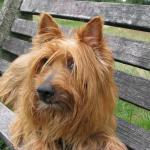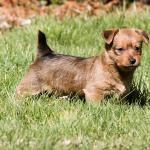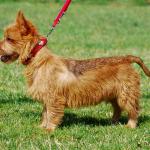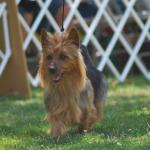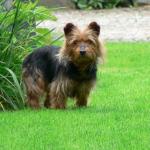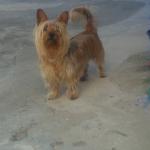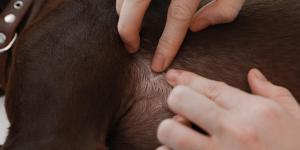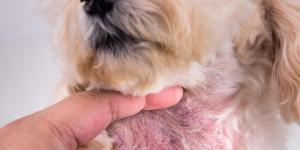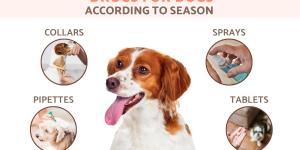Australian Terrier
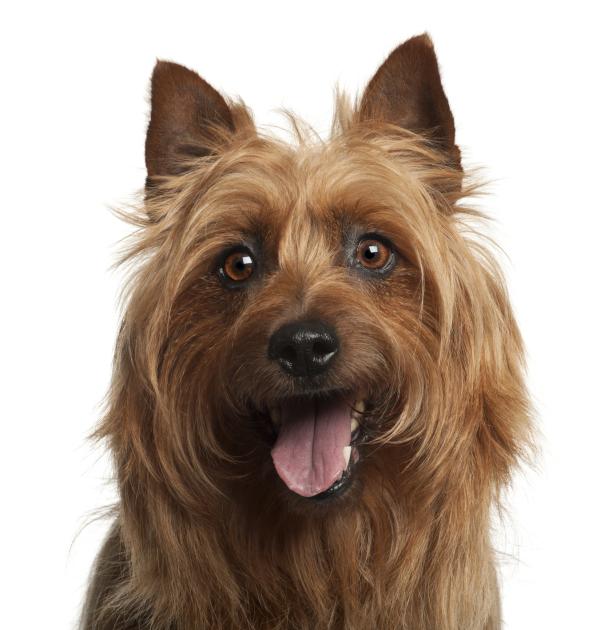
The Australian Terrier is a small robust dog, similar to the Yorkshire terrier. This dog comes from the Australian island of Tasmania. They are very determined but also much more calm than other terrier dogs.
In this AnimalWised breed sheet we're going to talk about the Australian Terrier, their characteristics, care, health and more. Keep reading to learn more about this breed and see if it's the right companion dog for you!
- Australia
- Australia
- Group III
- 5-14
- 14-18
- 18-22
- 22-27
- 27-31
- More than 31
- 2-7
- 7-22
- 22-55
- 55-100
- 100-220
- 8-10
- 10-12
- 12-14
- 15-20
- Low
- Meidum
- High
Origin of the Australian terrier
This terrier was born on the Australian island of Tasmania , from crosses between different terrier dogs that had been brought from Europe. Among the breeds thought to give rise to the Australian terrier are: Dandie Dinmont terrier, Yorkshire terrier , Skye terrier and Manchester terrier. The mixing of so many breeds gave rise to good genetics that could explain the low frequency of inherited diseases in this breed. Another plausible explanation is the intense natural selection to which the Australian terrier was subjected from its origins, since the Australian rural environment is harsh and hostile.
Be that as it may, the result of the crosses gave rise to a small but tough and resistant dog, capable of hunting rodents and snakes, and raising the alarm in the presence of strangers. Despite this, the character that remains in this terrier is more stable and calm than in other dogs in the group. Today the Australian terrier is mainly a companion dog, highly appreciated in Australia but also known in different parts of the world.
Physical characteristics of the Australian terrier
These dogs have a small but robust body for their size. They are longer than they are tall, and their overall body has the shape of a rectangle. Males reach a height of 25cm at the withers, while females are slightly smaller. The ideal height at the withers for males is 25 centimeters, while females are slightly smaller. The ideal weight for males is 6.5 kilograms, with females being proportionally lighter. As the FCI standard of the breed indicates, the Australian terrier is “a robust dog, with short limbs and elongated in proportion to the height”.
The head of this dog is moderately wide with a flattened cranial vault. The nose is black and medium-sized. It extends to the nasal bridge. The muzzle is strong for such a small dog and is the same length as the skull. Their eyes are cunning, small, oval, and dark brown in color. Their ears are small, erect and pointed. The Australian terrier's tail is set high and is usually raised. Unfortunately, the FCI breed standard indicates that the tail must be docked, promoting ancient practices that do not take into account the welfare of the animals.
These terriers have a double-layered coat. The outer coat of hair is straight, rough, and moderately long. The undercoat is short and smooth. The colors accepted in this breed are: blue and tan, blue-steel and tan, blue-gray and tan, sand or red.
Character of the Australian terrier
This dog is a working terrier and therefore has a courageous and determined temperament. With that being said, they are more stable and calm than most other terriers, making them an excellent companion dog for those families that would prefer a more tranquil dog.
The Australian Terrier needs a lot of company from his family as they are quite social. However, they are also very reserved and shy around strangers. Like other terriers, they may be aggressive with dogs of the same sex and small animals. This is why it's important to socialize our dog from a young age. By properly socializing them, they will most likely have a more balanced temperament as adults.
Caring for an Australian terrier
Hair care for an Australian terrier is simpler than in other similar dog breeds. This breed will only need to have their coat brushed twice a week to remove any dead hair and keep their coat untangled and clean. It's not necessary to bathe these dogs unless they get really dirty.
When it comes to exercise, these dogs are fine with a one relaxed walk per day and some extra play time. These are small dogs that do not need a lot of exercise to stay happy and healthy. This is what makes them a great dog for apartments. When it comes to play time, your Australian Terrier will enjoy playing with you and just spending time near you. Company is key when caring for this breed.
Educating and training your Australian Terrier
The Australian Terrier is one of the easiest Terriers to train since they are less hyperactive than the rest. However, when training any dog we must remember to always educate them through positive reinforcement. When scolding, a simple and firm “no” is enough. There is no need for any aggressive verbal or physical punishment. By resorting to positive reinforcement, you will ensure yourself that your relationship with your dog will be healthy and that they will be happy.
When you start socializing your dog, you can also begin to teach them basic commands that will help you keep them safe in the future. Common behavior problems in this breed includes excessive barking, a tendency to dig in the garden, and occasionally aggressiveness towards other dogs and other pets. These problems can be prevented by giving dogs the opportunity to exercise, sufficient company, proper socialization, and proper training.
Australian Terrier health
The Australian terrier is among the healthiest dogs and is not prone to major inherited diseases. However, they can suffer from:
- Legg-Calve-Perthes disease
- Patellar luxation
- Diabetes
- Flea allergy
- Cryptorchidism
Australian Terrier photos

